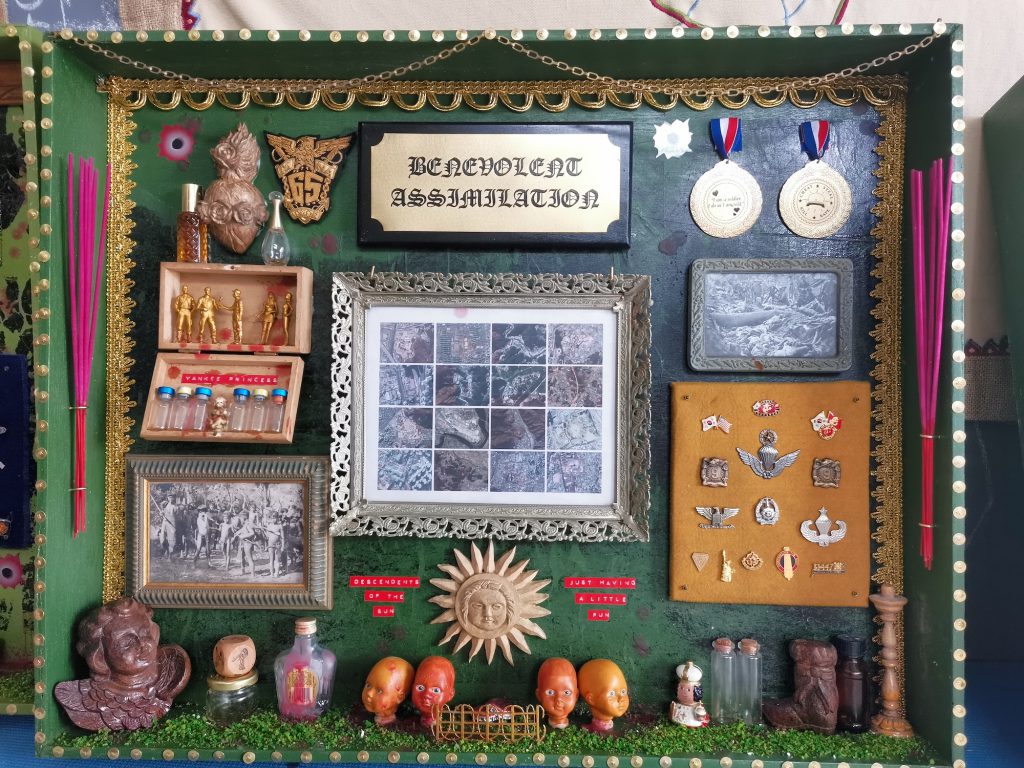
Cian Dayrit, Schemes of Belligerence, Theatrics of Power: Honor, 2021, wood, brass, various objects, glass and plastic bottles, plaster, resin, paper, 61 x 76.2 x 10.1 cm
Cian Dayrit, Schemes of Belligerence, Theatrics of Power: Honor, 2021, wood, brass, various objects, glass and plastic bottles, plaster, resin, paper, 61 x 76.2 x 10.1 cm

How can lives damaged by the weight of militarism and shadow terrains of incarceration be accounted for? Cian Dayrit composes projects that unfold as long-drawn serial narratives, mapping events to interrogate imperial histories, the expanding lexicon of state terror, and the foundations of the neoliberal economy that “unmake” common practices of ownership and environmental justice. Dayrit has also designed workshops in counter-cartography, which he regularly organizes with groups of students, peasants, and activists across the Philippines. As Frantz Fanon writes 1961 in Wretched of the Earth, “Imperialism leaves behind germs of rot which we must clinically detect and remove from our land but from our minds as well.” In his work, mapping is an infographic landscape and an instrument to unfasten the toxic knot of colonial and corporate violence while also denoting how peasants and minorities are targeted, internally displaced, surveilled, and always left vulnerable to the hardening of nationalist boundary-making.
Schemes of Belligerence (2021) is an immense multipart installation of embroidered quilts and sculptures, both crafted out of wood and assembled, plotting sequences of masculine valor that reckons with schemes of torture, the centuries-long trap of indebtedness, and martial culture in neocolonies. Taking the format of a trophy room, Theatrics of Power (2021) is made of found uniforms, patches, badges, photographs, totems, and weaponry that deliberate on the emboldening spell of disciplinary authority. The carved wooden sculptures of Methods of Madness (2021) relay the embodied trauma of corporal punishment, circuits of manipulation by puppet governments, and indoctrination strategies that rattle the nerves and sanity of everyday life.
Dayrit’s collaboratively-made tapestries further expose the United States’ interventionist politics, including the massive exports of weapons technology under Rodrigo Duterte’s strongman regime and the Philippines’ recent Anti-Terror Bill. His pictographic references include satellite images of American military bases in the Philippines and South Korea, air raids, and waves of brutality against the Filipino people carried out in the name of defense, allegiance, and development.
Cian Dayrit, Schemes of Belligerence, Theatrics of Power: Honor, 2021, wood, brass, various objects, glass and plastic bottles, plaster, resin, paper, 61 x 76.2 x 10.1 cm